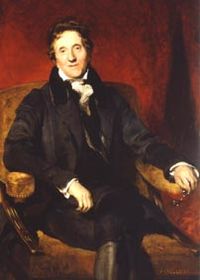John Soane Architect
Sir John Soane RA (/soʊn/; 10 September 1753 – 20 January 1837) was an English architect who specialised in the Neo-Classical style. The son of a bricklayer, he rose to the top of his profession, becoming professor of architecture at the Royal Academy and an official architect to the Office of Works. He received a knighthood in 1831.His architectural works are distinguished by their clean lines, massing of simple form, decisive detailing, careful proportions and skilful use of light sources. The influence of his work, coming at the end of the Georgian era, was swamped by the revival styles of the 19th century. It was not until the late 19th century that the influence of Sir John's architecture was widely felt.His best-known work was the Bank of England (his work there is largely destroyed), a building which had a widespread effect on commercial architecture. He also designed Dulwich Picture Gallery, which, with its top-lit galleries, was a major influence on the planning of subsequent art galleries and museums. His main legacy is Sir John Soane's Museum, in Lincoln's Inn Fields, London. The museum comprises his former home and office, designed to display the art works and architectural artifacts that he collected during his lifetime, and described in the Oxford Dictionary of Architecture as 'one of the most complex, intricate, and ingenious series of interiors ever conceived'.
Search
Architect
| Significant building |
|---|
